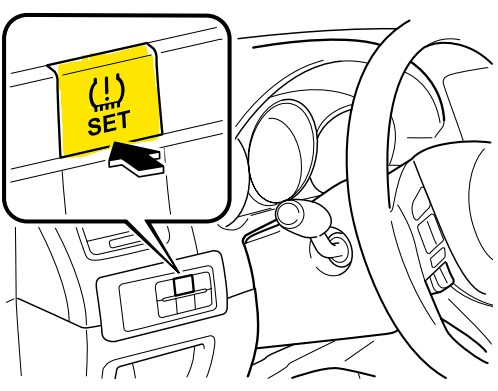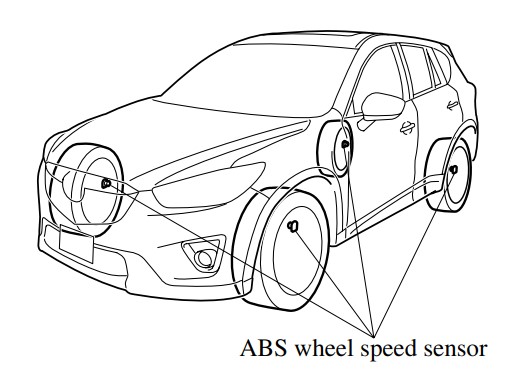The 2016 Mazda CX-5 is a compact crossover SUV that is equipped with advanced technology and features to provide a comfortable and safe driving experience. One of these features is the tire pressure monitoring system (TPMS), which alerts the driver when the tire pressure is low. When the tire pressure warning light illuminates, it is important to reset it as soon as possible to ensure the accuracy of the TPMS. In this article, we will provide a step-by-step guide on how to reset the 2016 Mazda CX-5 tire pressure warning light.
sTEPS TO rESET mAZDA cx-5 tpms
Step 1: Check and Adjust the Tire Pressure
Before resetting the tire pressure warning light, it is important to check the tire pressure and make sure it is at the recommended level. The recommended tire pressure for the 2016 Mazda CX-5 can be found in the owner’s manual or on the tire information label located on the driver’s door jamb.
To check the tire pressure, you will need an accurate tire gauge. Remove the valve cap from the tire and press the tire gauge onto the valve stem. The gauge will show the current tire pressure. If the tire pressure is low, add air to the tire until it reaches the recommended level. Repeat this process for each tire. Always check pressures when vehicle is cold.
Step 2: Turn the Ignition On
With the tire pressure adjusted, it is now time to reset the tire pressure warning light. Start by turning the ignition on, but do not start the engine. You should see the tire pressure warning light on the dashboard illuminated.
Step 3: Press and Hold the TPMS Button
Locate the TPMS reset button, which is located under the steering wheel to the left. Press and hold the TPMS reset button for about 10 seconds until the tire pressure warning light starts flashing. The flashing light indicates that the system is resetting and the process is complete.
Step 4: Turn the Ignition Off and On Again
Once the tire pressure warning light has stopped flashing, release the TPMS button and turn the ignition off and then on again. This will turn off the tire pressure warning light and indicate that the system has been reset successfully.
Step 5: Check the Tire Pressure Again
After resetting the tire pressure warning light, it is important to check the tire pressure again to make sure it is still at the recommended level. If the tire pressure is still low, add air to the tire until it reaches the recommended level. If the TPMS light stays illuminated even after completing all the steps, there may be a leak in one or more tires. To find out, fill all tires to an exact PSI, reset the TPMS, drive the vehicle a few miles and then re-check the pressures. Whichever tire is no longer at the pressure level it was before, you have a leak.
Always Reset TPMS in These Cases
Tire pressure has been adjusted
Tire rotation has been performed
Any tire or wheel has been replaced.
When the battery dies or has been drained.
When the TPMS light is on.
How Mazda CX-5 TPMS Works
The TPMS in the 2016 Mazda CX-5 uses sensors in each tire to monitor the air pressure. These sensors transmit tire pressure data to the TPMS control module, which compares the tire pressure data to the manufacturer’s recommended tire pressure. If the tire pressure is too low, the TPMS control module sends a signal to the tire pressure warning light on the dashboard, which illuminates to alert the driver.
The TPMS in the 2016 Mazda CX-5 uses indirect sensing technology. Indirect sensing TPMS uses the ABS wheel speed sensors to estimate the tire pressure based on the tire’s rolling radius.
Benefits of TPMS in Mazda CX-5
Improved safety: Proper tire pressure helps ensure that the tires have good contact with the road, which can improve handling and stability, especially in emergency situations. Low tire pressure can also lead to decreased fuel efficiency and increased tire wear, which can reduce the life of the tires.
Increased fuel efficiency: Proper tire pressure can improve fuel efficiency by reducing rolling resistance, which can save drivers money on fuel costs.
Improved comfort: Proper tire pressure can also improve the comfort of the ride by reducing road noise and vibrations.
Peace of mind: The TPMS in the 2016 Mazda CX-5 provides drivers with peace of mind, as they will be alerted if the tire pressure is too low, which can prevent potential dangers on the road.
TPMS Malfunction Indicator
The 2016 Mazda CX-5 also has a TPMS malfunction indicator to let the driver know when the tire pressure monitoring system is not working correctly. (uses the same indicator light) If your TPMS light flashes for a minute and then stays on continuously upon start up of the vehicle, this is a sign that there is a problem with your TPMS. This usually means a battery in one of the sensors is low and the sensor needs to be replaced.
Conclusion
Resetting the tire pressure warning light on the 2016 Mazda CX-5 is a simple and straightforward process that can be completed in just a few steps. By following the steps outlined in this article, you can ensure that your tire pressure monitoring system is functioning accurately and your vehicle is operating at peak performance.



